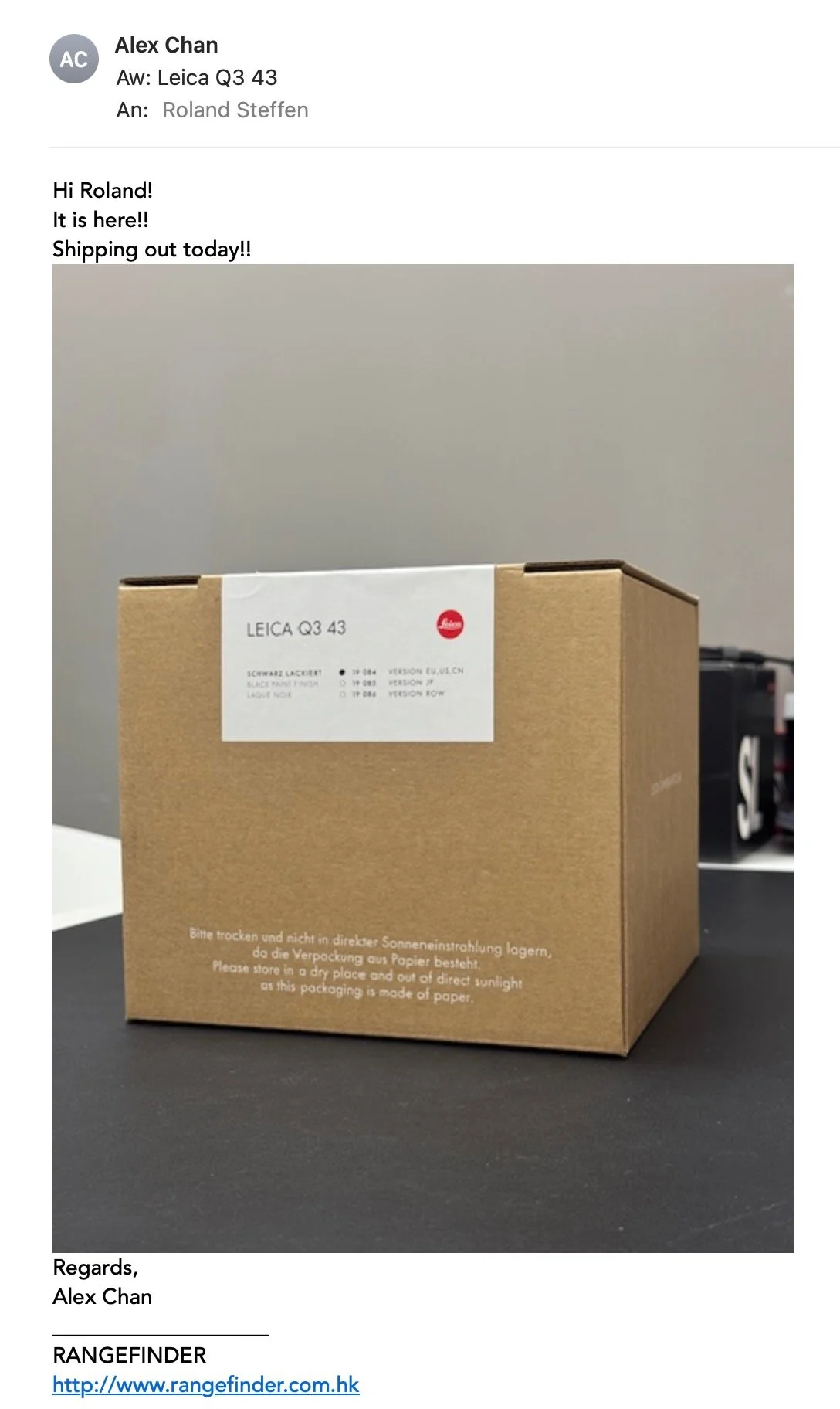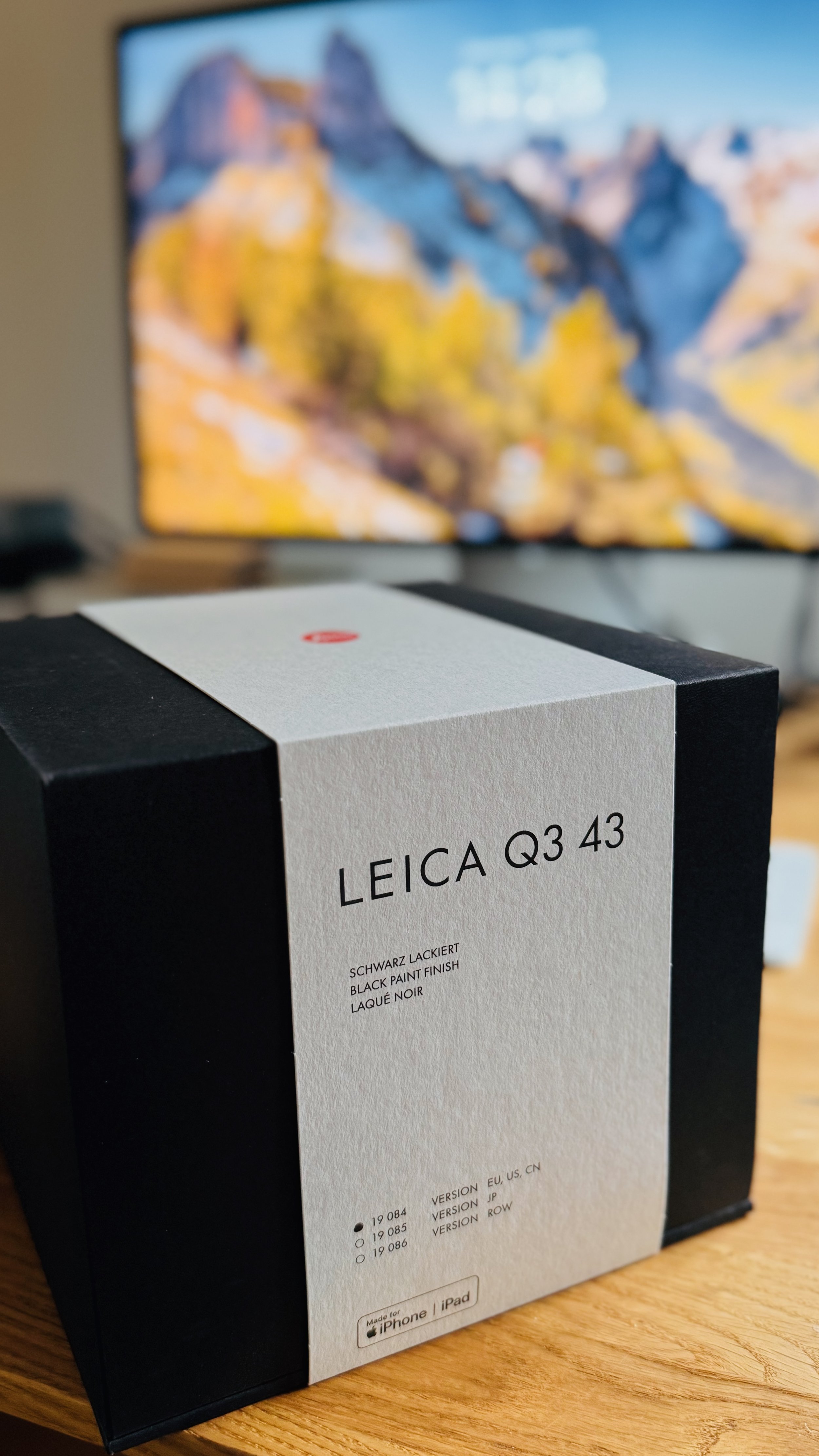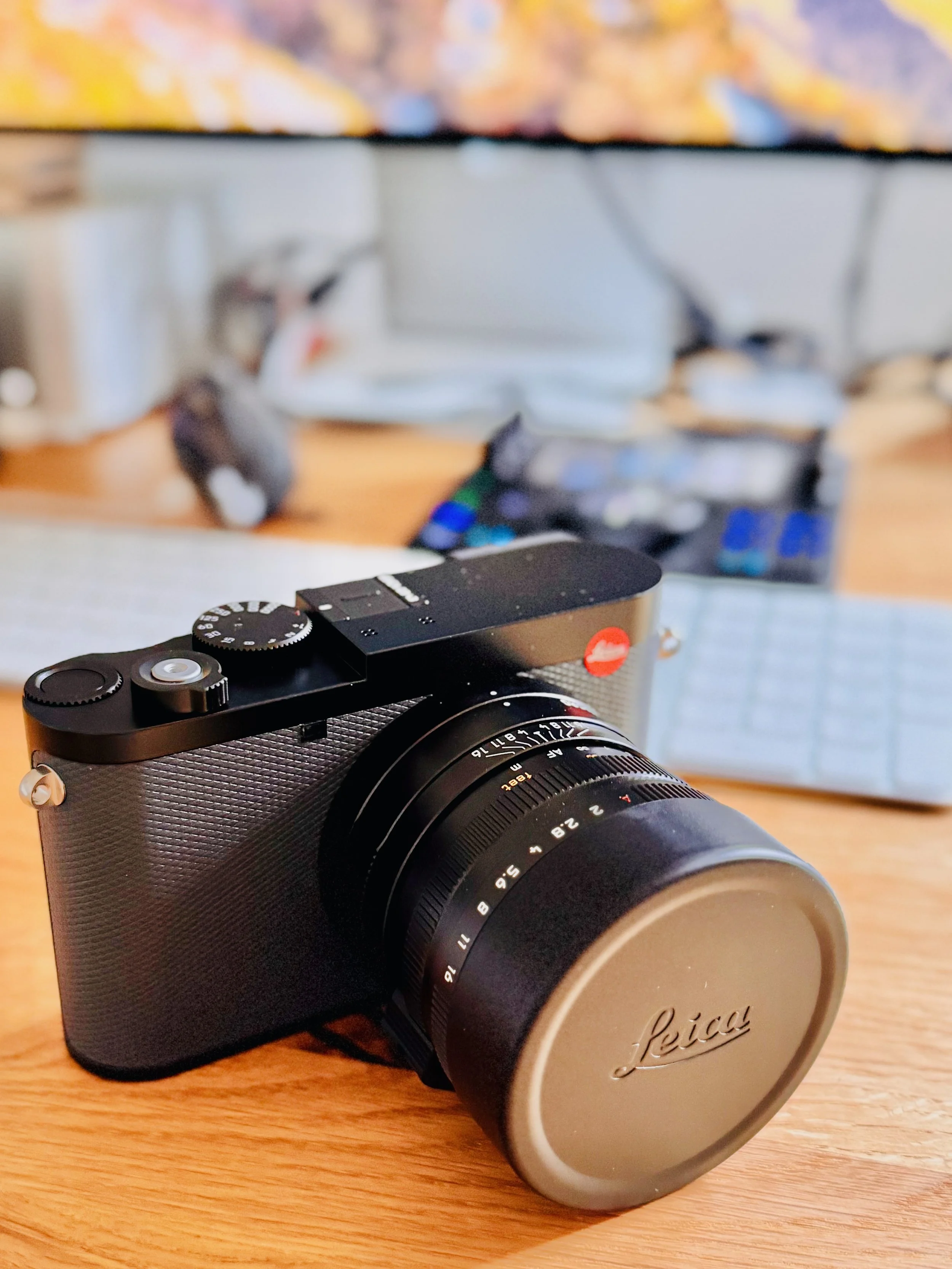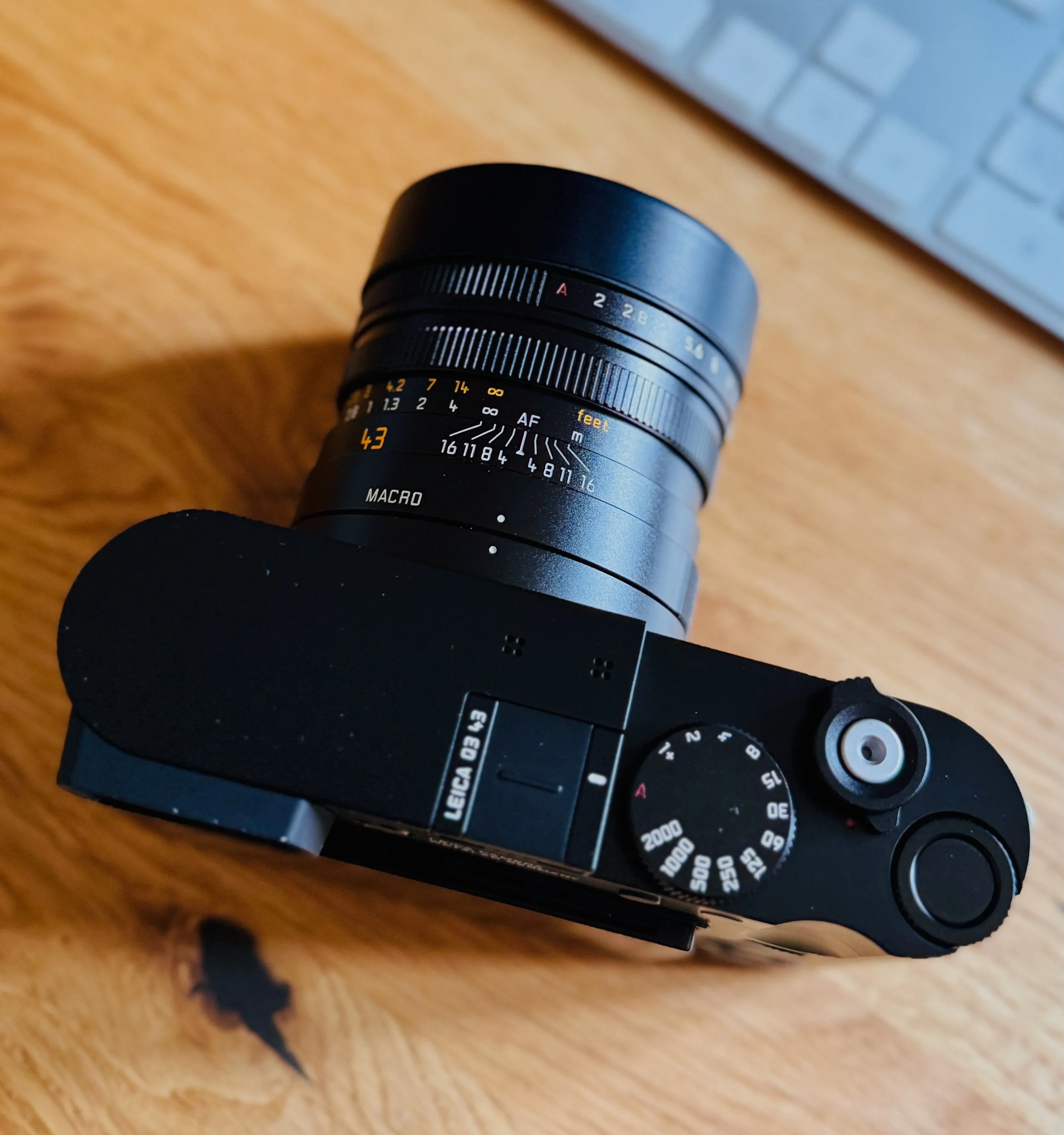Leica Q3 43 - The rumors have come to an end
Dunnottar Castle, Scotland (Leica Q1, 2015)
(Deutscher Text folgt unten)
The history of the Leica Q began in 2015 with the introduction of a completely new camera segment: the innovative full-frame camera with fixed focal length and integrated macro mode. At first glance, however, the state-of-the-art Q segment reveals its legendary roots and thus its immeasurable wealth of experience in engineering and industrial design.
Leica Q1 examples (Scotland and Seychelles 2015/2016)
With its timeless look and accessible functionality, a Leica Q seems to effortlessly create closeness between the people in front of and behind the lens. It can be integrated naturally and intuitively into everyday creative life and operated manually, fully automatically or a mix of both. For unique photographs and videos. In the usual outstanding Leica quality “made in Germany”.
Since the first Leica Q was launched in 2015, the core message has not changed: A 28 mm Summilux f/1.7 fixed focal length. This is now changing with the Leica Q3 43. Just because all modern smartphones shoot with a 28mm doesn't mean it's really good. A separation of subject and surroundings simply looks more natural at 35 or 50mm. That's why I've always struggled with the 28mm focal length. I'm more of a 35mm or 50mm type. That's why I'm so happy that Leica is now coming onto the market with a very good compromise of 43mm.
Photographer: Roland Steffen - Gear: LEICA Q1 and Q2. Pictures not to be used without my explicit permission.
Leica Q2 examples (Spain, Portugal, Dubai 2023/2024)
For years, there have been repeated wishes and rumors about an additional 35mm or 50mm version of the Q. Leica has now created a combination of both focal lengths: 43mm. But this time not again with a Summilux f/1.7 but with a brand new Summicron f/2.0 APO - Whow, what a clever move from Leica! I was really positively surprised.
In September 2024 I thought about replacing my 50mm Summilux with the Summicron 50mm f/2.0 APO for my M11. In addition to the new 35mm Summicron f/2.0 APO, it is the crème de la crème of what is technically possible today - unrivaled sharpness and macro contrast from the center to the edges that only an APO from Leica can deliver (OK, maybe also the APO Lanthar from Voigtländer...).
Leica Q2 b&w examples (Geneva, Spain 2024)
But what does APO stand for?
APO stands for ‘apochromatically corrected’. In normal lenses, the optical design concentrates the focus of blue and green light in a single plane, while red light falls slightly into a different focal plane. This ‘chromatic aberration’ increases as the focal length of the lens increases, particularly with long telephoto lenses. With APO lenses, the design of the lenses and the use of glass elements with low dispersion allows red light to be focused in the same plane as blue and green light, resulting in a sharper image without colour fringing. The construction of an APO lens is very complex - especially in this compact size - and only Leica currently masters this. The price is therefore naturally correspondingly high.
The all new Leica Q3 43 (source: Leica.com)
Of course, the whole thing has its price at Leica, both 35 and 50 APO's go for over CHF 8000 (per lens) over the online counter in Switzerland - pretty hefty. That's why I didn't order it, even though I could get a Leica APO lens from my favorite dealer in Hong Kong for a lot cheaper. But the fantastic resolution of the APO has never left me in peace …
…and now the Q3 43 comes with an APO prime lens - bang!
Many people say that with the Q you get a full-frame camera for the price of a single Summilux lens. This is no different with the Q3 43 with APO. You could almost call the new Q3 43 a bargain ;-)
I had already bought the first Q1 in 2015 and was thrilled. Due to the higher resolution, I then replaced the Q1 with the Q2, which I used a lot on my travels until this spring. The successor, the Q3, was never on my radar as it has the same sensor as my M11. But then on 9/25/24 when the rumors about the new Q3 43 were confirmed and one day before the official Leica launch of the Q3 43, I got in touch with Alex Chan, my Leica dealer from Rangefinder in Hong Kong, and he told me that he would receive a batch of three Q3 43s in the first week of October 24 - two of them were already reserved and the last one I grabbed - bang! Because I know that after the launch - the Q3 43 will be not available worldwide for many months - that's normal marketing at Leica and keeps the price of the gear high (but now Fuji do the same with the X100VI…).
Leica Q2, Davos Switzerland, 2023
Leica Q2, Carrara, Italy, 2023
I really wanted to use the Q3 43 alongside my M11 on our trip to Malaysia and Borneo this November. Pictures with my new Q3 43 will follow here in the next weeks. So check back here soon!
Official Leica Link to the Q3 43
Update 28.9.2024: My Q3 43 is on the way form Hong Kong to Klosters, expected arriving date is next week 3.10.24
Update, 1.10.2024: Leica Q3 43 arrived from Hong Kong today!
1.10.2024 - first test shots
Leica Q2 43 - Macro Mode (no crop) - the dust collector...
Klosters, Switzerland - Leica Q3 43
Klosters, Switzerland - Leica Q3 43
Klosters, Switzerland - Leica Q3 43
(Deutsche Version)
Die Geschichte der Leica Q begann 2015 mit der Einführung eines völlig neuen Kamerasegments: der innovativen Vollformatkamera mit Festbrennweite und integriertem Makromodus. Auf den ersten Blick verrät das hochmoderne Q-Segment jedoch seine legendären Wurzeln und damit seinen unermesslichen Erfahrungsschatz in Technik und Industriedesign.
Mit ihrem zeitlosen Aussehen und ihrer zugänglichen Funktionalität scheint eine Leica Q mühelos Nähe zwischen den Menschen vor und hinter dem Objektiv zu schaffen. Sie lässt sich natürlich und intuitiv in den kreativen Alltag integrieren und manuell, vollautomatisch oder in einer Mischung aus beidem bedienen. Für einzigartige Fotos und Videos. In gewohnt hervorragender Leica Qualität „made in Germany“.
Seit der Markteinführung der ersten Leica Q im Jahr 2015 hat sich an der Kernaussage nichts geändert: Eine 28 mm Summilux f/1.7 Festbrennweite. Das ändert sich nun mit der Leica Q3 43. Nur weil alle modernen Smartphones mit einer 28mm Linse fotografieren heisst das noch lange nicht, dass dies wirklich gut ist. Eine Separierung von Motiv und Umfeld wirkt bei 35 oder 50mm einfach natürlicher. Ich habe deshalb immer gehadert mit der 28mm Brennweite. Ich bin eher ein 35mm oder 50mm Typ. Deshalb bin ich so glücklich, dass Leica nun mit einem sehr guten Kompromiss von 43mm auf den Markt kommt.
Seit Jahren gibt es immer wieder Wünsche und Gerüchte über eine zusätzliche 35mm oder 50mm Version der Q. Leica hat nun eine Kombination aus beiden Brennweiten geschaffen: 43mm. Aber diesmal nicht wieder mit einem Summilux f/1.7, sondern mit einem brandneuen Summicron f/2.0 APO - Whow, was für ein cleverer Schachzug von Leica! Ich war wirklich positiv überrascht. Im September 2024 dachte ich darüber nach, mein 50mm Summilux durch das Summicron 50mm f/2.0 APO für meine M11 zu ersetzen. Neben dem neuen 35mm Summicron f/2.0 APO ist es die Crème de la Crème dessen, was heute technisch möglich ist - unerreichte Schärfe und Makrokontrast von der Mitte bis zum Rand, wie sie nur ein APO von Leica liefern kann (OK, vielleicht auch das APO Lanthar von Voigtländer...).
Natürlich hat das Ganze bei Leica seinen Preis, sowohl das 35er als auch das 50er APO gehen in der Schweiz für über 8000 CHF (pro Objektiv) über die Online-Theke - ziemlich happig. Deshalb habe ich bisher kein APO bestellt, obwohl ich ein Leica APO-Objektiv bei meinem Lieblingshändler in Hongkong viel günstiger bekommen könnte.
Aber die fantastische Auflösung des APO hat mich nie in Ruhe gelassen - und jetzt kommt die Q3 43 mit einem APO-Prime-Objektiv - Whow - das Warten hat sich für mich gelohnt.
Doch wofür steht APO?
APO steht für „apochromatisch korrigiert“. Bei normalen Objektiven konzentriert die optische Konstruktion den Fokus von blauem und grünem Licht in einer einzigen Ebene, während rotes Licht leicht in eine andere Brennebene fällt. Diese „chromatische Aberration“ nimmt mit zunehmender Brennweite des Objektivs zu, insbesondere bei langen Teleobjektiven. Bei APO-Objektiven ermöglicht die Konstruktion der Objektive und die Verwendung von Glaselementen mit geringer Dispersion, dass rotes Licht in der gleichen Ebene wie blaues und grünes Licht gebündelt wird, was zu einem schärferen Bild ohne Farbsäume führt. Die Konstruktion eines APO Objektivs ist sehr komplex - vor allem in dieser kompakten Grösse und dies beherrscht aktuell nur Leica. Deshalb ist natürlich auch der Preis entsprechend hoch.
Viele Leute sagen, dass man mit der Q eine Vollformatkamera zum Preis eines einzelnen Summilux-Objektivs bekommt. Das ist auch bei der Q3 43 mit APO nicht anders. Man könnte sogar sogen, dass die neue Q3 43 fast als Schnäppchen gilt. Weshalb? Der Preis eines 50mm APO Summicron ist ca. CHF 8000 im Vergleich zur Q3 43 für ca. CHF 6000…noch Fragen? ;-)
Ich hatte bereits die erste Q1 im Jahr 2015 gekauft und war begeistert. Aufgrund der höheren Auflösung habe ich die Q1 dann durch die Q2 ersetzt, die ich bis zu diesem Frühjahr viel auf meinen Reisen genutzt habe. Den Nachfolger, die Q3, hatte ich nie auf dem Radar, da sie den gleichen Sensor wie meine M11 hat. Aber dann, am 25.9.24, als sich die Gerüchte über die neue Q3 43 bestätigten und einen Tag vor der offiziellen Markteinführung der Q3 43 durch Leica, setzte ich mich mit Alex Chan, meinem Leica-Händler von Rangefinder in Hongkong, in Verbindung, und er erzählte mir, dass er in der ersten Oktober Woche eine Charge von drei Q3 43 erhalten würde - zwei davon waren bereits reserviert und die letzte habe ich mir geschnappt! Denn ich weiss, dass die Q3 43 nach der Markteinführung weltweit für viele Monate nicht erhältlich sein wird - das ist normales Marketing bei Leica und hält den Preis der Kameras hoch (inzwischen macht Fuji ja das gleiche mit der X100VI...).
Ich wollte die Q3 43 unbedingt zusammen mit meiner M11 auf unserer Reise nach Malaysia und Borneo im November einsetzen. Bilder mit meiner neuen Q3 43 werden hier in den nächsten Wochen folgen. Schau` also bald wieder hier vorbei!



































